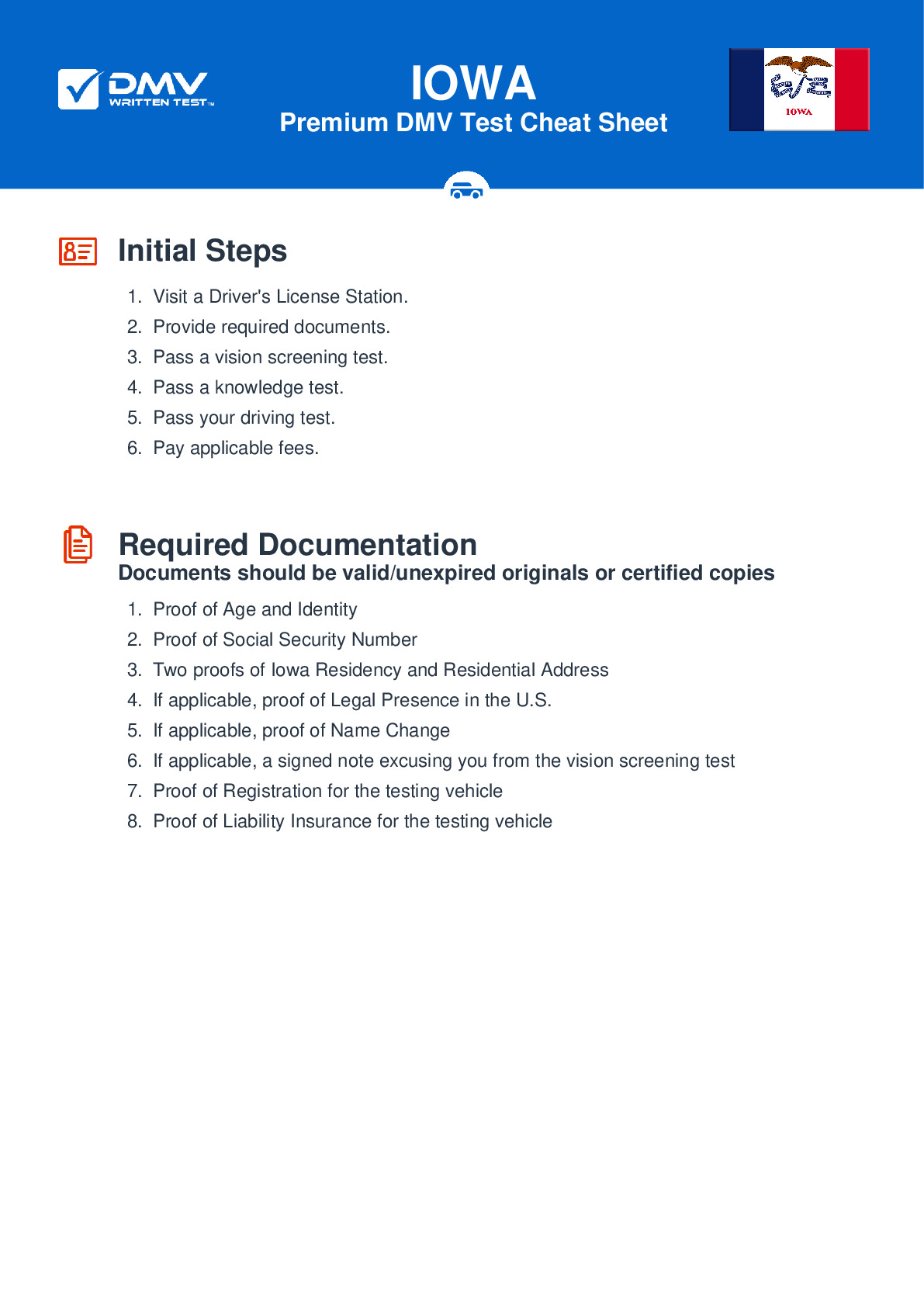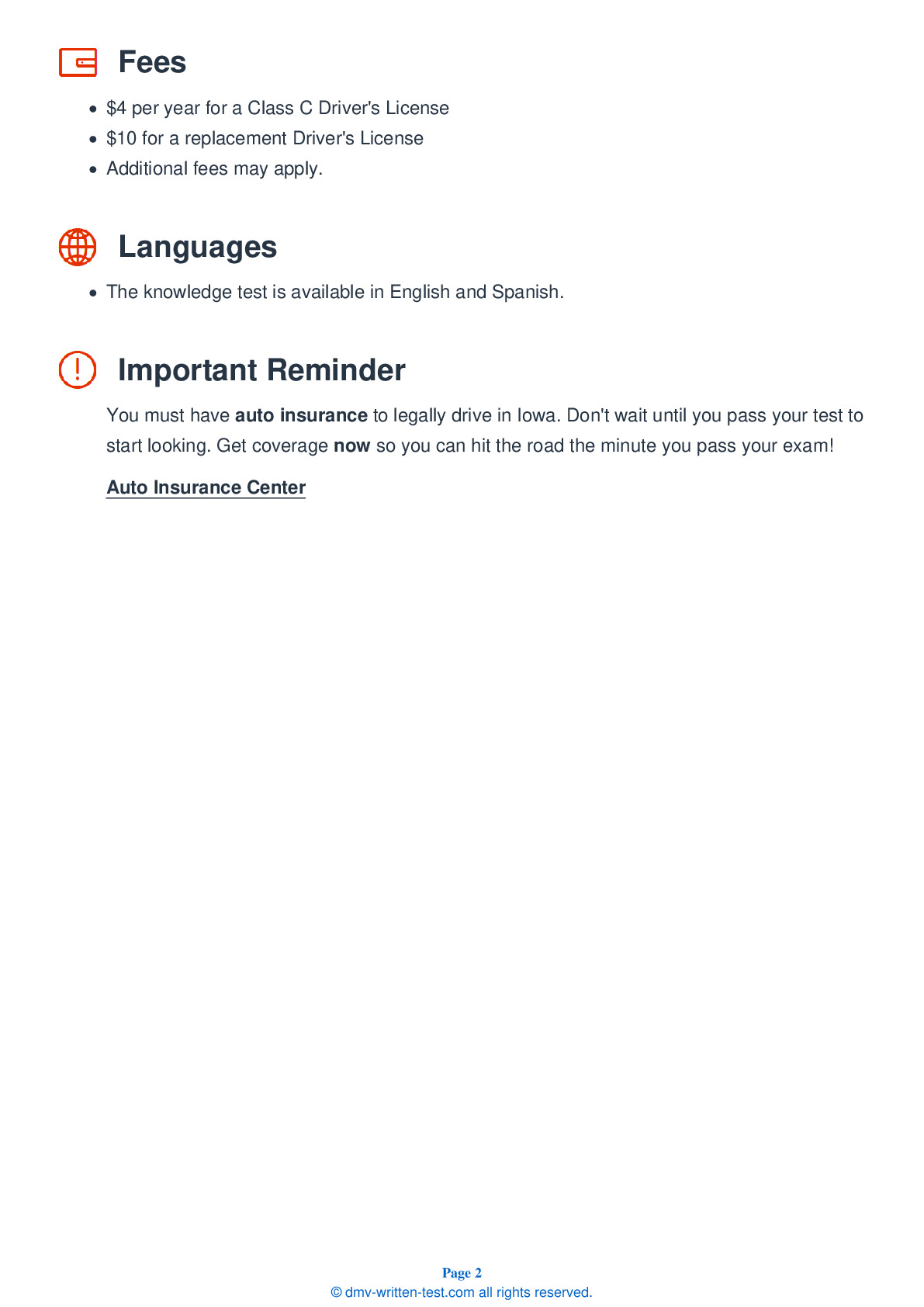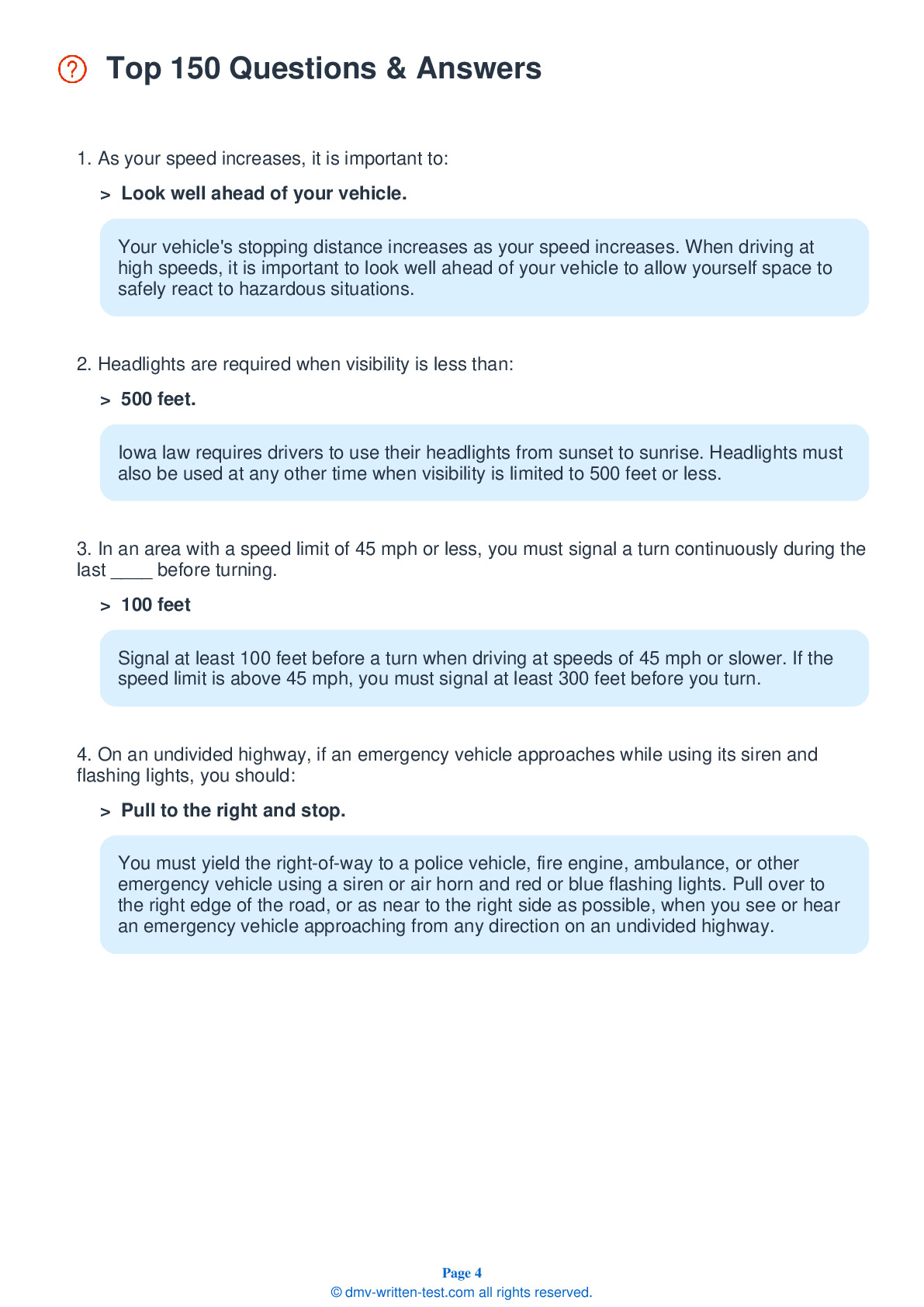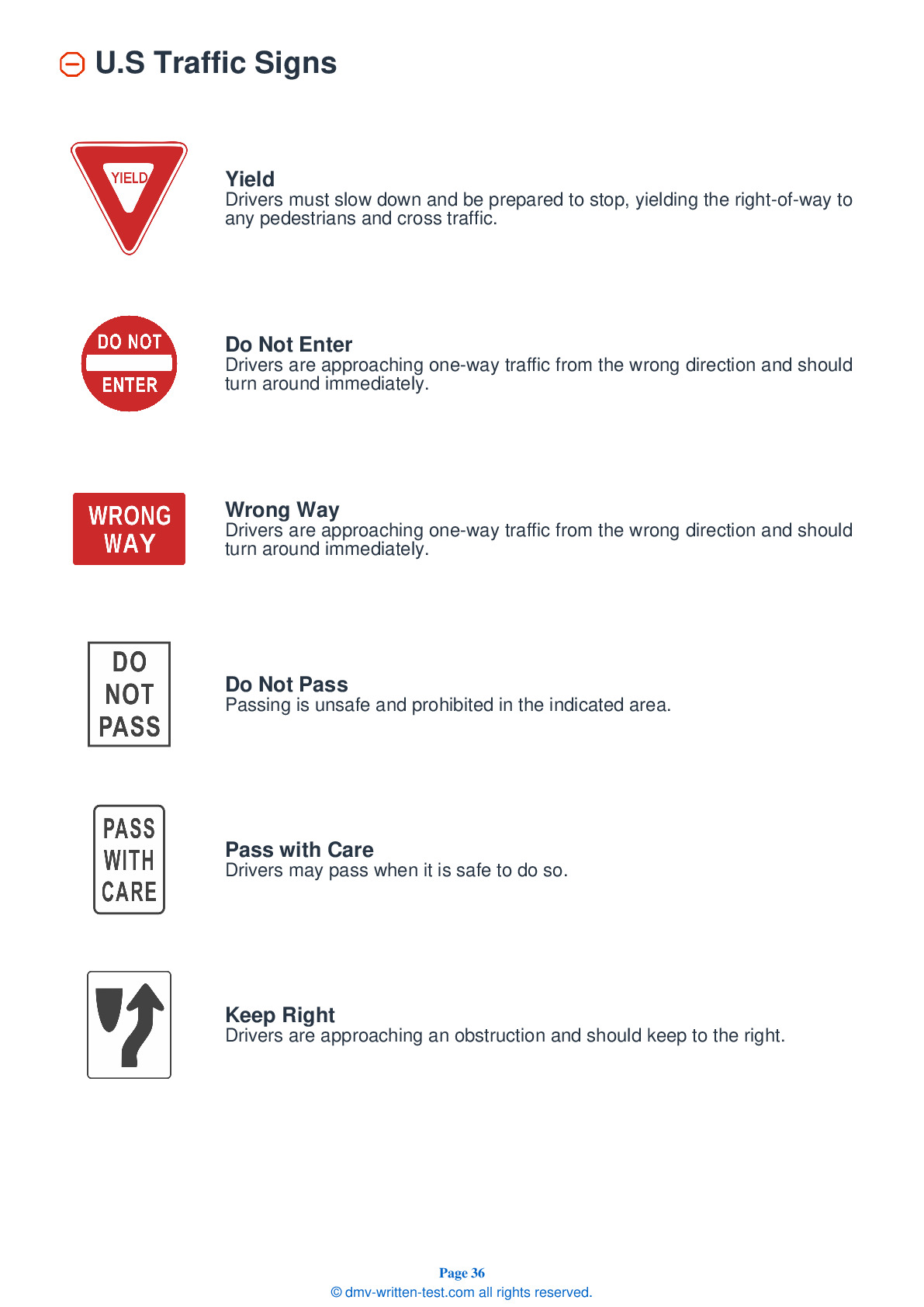2025 Iowa Permit Test 3
The following questions are from real DMV written tests. These are some of the actual permit questions you will face in Iowa. Each permit practice test question has three answer choices. Select one answer for each question and select "grade this section." You can find this button at the bottom of the drivers license quiz. For a complete list of questions and answers for Iowa please visit https://cheat-sheets.dmv-written-test.com/en/iowa/car.
Number of Tests
Number of Question
Passing Score
9. A seat belt should be adjusted so that it:
Explanation
Lap belts should fit snugly across your hip bones and the lower part of your abdomen. Shoulder belts should sit comfortably so that you can insert your fist between the belt and your chest.
11. Your brake lights tell other drivers that you:
Explanation
Your vehicle's brake lights indicate to other drivers that you are slowing down or stopping. Your brake lights should always be in working order when you are driving on any roadway.
12. Which of the following commonly causes traffic accidents?
Explanation
Driving too fast for conditions is a major cause of motor vehicle crashes. Being inattentive to surroundings can cause a driver to collide with other vehicles. Most rear-end collisions are caused by drivers following other vehicles too closely.
13. Look over your shoulder to check your blind spot when:
Explanation
Look over your shoulder to check your blind spot every time you want to change your vehicle's position. If you are turning, changing lanes, or pulling toward or away from a curb, you should check your blind spots.
14. Signaling your intentions before turning, changing lanes, or driving away from a curb:
Explanation
When changing lanes or turning, signal your intentions well in advance. The law requires that you signal for at least 100 feet before you move your vehicle to the right or left. Before pulling away from a curb, always signal to inform passing drivers of your intentions.
15. When approaching a disabled pedestrian using a guide dog, white cane, or other assistive device, a driver should yield the right-of-way.
Explanation
A pedestrian with a disability who is utilizing a guide dog, a white cane, a wheelchair, or another assistive device, whether on a sidewalk or roadway, has the right-of-way and is granted the same rights as any other pedestrian.
16. A pedestrian starts to cross in front of your vehicle. You should:
Explanation





